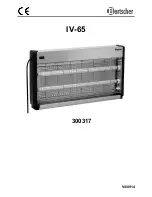
Chapter 4
EDGE Call Mode Operation
EGPRS basics
176
4460 GSM System Option and 4468 EDGE System Option
Version 12.20
Another parameter which is determined inside the test set but not necessarily
shown or assessed is the amplitude change or droop, a measure of the stability
of the power level during the burst. An amplitude change may be caused by on-
chip temperature changes during the RF transmission.
Finally, if the I and/or the Q component of the modulator has an unwanted DC
component, this can be determined in the origin offset suppression measure-
ment.
GPRS
EDGE uses an extended version of the GPRS (General Packet Radio Service)
protocol. GPRS replaces the GSM protocol above the physical layer; GSM and
GPRS operation share the same physical resources. In manufacturing and service,
the purpose of testing is to ensure that the hardware is working correctly, rather
than testing the protocol software.
Some GSM/GPRS/EGPRS mobile phones may have single-slot capability only.
Although the RF hardware is the same for GSM and GPRS and is usually tested
in circuit-switched mode tests, there may be an additional 8-PSK transmitter for
EDGE which should be tested.
Many EGPRS mobile phones support multiple time slots in the downlink and
uplink. This capability challenges the mobile phone more than in single-slot
operation: Components may produce side effects due to voltage drops or addi-
tional heat when multiple slots are transmitted or received. Therefore, most
manufacturers ensure product quality by multislot tests.
Uplink and downlink
assignments
GPRS is used to transmit packets or blocks of data from one end to another.
While circuit-switched connections are bidirectional and block a channel in both
directions for the duration of a call, packet data transfers may be unidirectional
and occupy the channel only for the time of the block transfer, i.e. the resource
“channel” can be shared by many users and allocated to users on a block-by-
block basis.
The channel and block administration is performed by the base station. When
one party needs to transfer data, a so-called Temporary Block Flow (TBF) is initi-
ated on RLC/MAC level. Since the information flow is unidirectional, there is a
separate TBF for each direction, called Downlink TBF and Uplink TBF. Moreover,
each TBF can use one or multiple time slots. A bidirectional data transfer can be
asymmetric, i.e. may use more time slots in one than in the other direction.
The GPRS protocol uses a number of new protocol layers and procedures. For the
purpose of RF testing, only RLC and MAC layers are required, plus a few proce-
dures such as the GPRS Attach (registration procedure of a mobile in a GPRS
network). Higher layers (e.g. LLC) and their procedures, such as PDP Context Acti-
vation, are not required for RF testing and therefore not supported by the 4460
GSM System Option and 4468 EDGE System Option.
















































